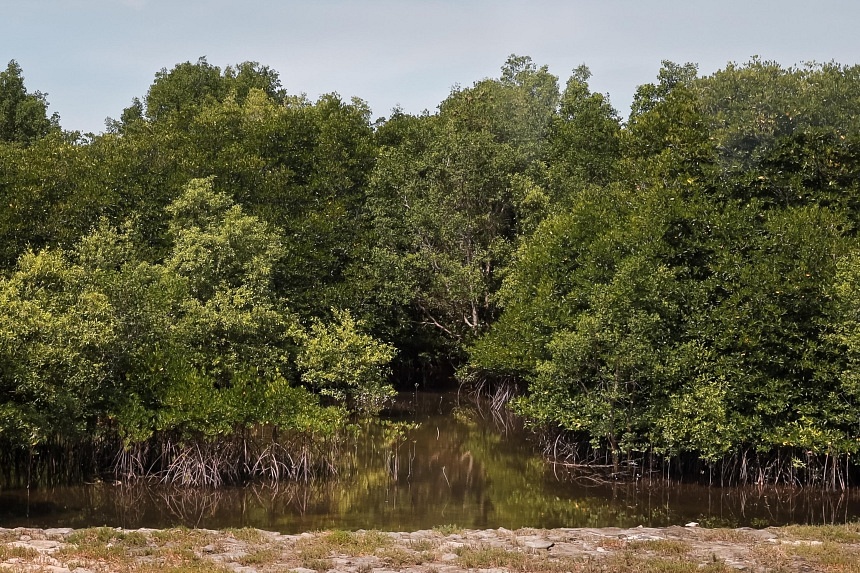SINGAPORE – Planting mangroves can yield many benefits such as coastal protection and biodiversity improvement, but a new study has found that planted stands of mangrove trees cannot hold up against a natural, untouched mangrove forest in one key aspect: carbon storage.
Planted mangrove trees can store up to 71 per cent to 73 per cent of the carbon found in an intact mangrove forest of the same coastal environment, and this level of carbon storage is achieved only after around 20 years of growth, the study shows.
Researchers say this finding shows that replanting new mangroves cannot fully compensate for the loss of untouched forests.
The study defines planted mangroves as areas where mangrove vegetation was deliberately planted either where they had previously existed, such as in a degraded area, or where no mangroves had existed before.
The co-lead researcher of the study, Dr Carine Bourgeois of the US Forest Service International Programme (Central Africa and Middle East), said their models indicate that even if all highly restorable mangrove areas were replanted, they would only capture and store 0.025 per cent of annual global carbon dioxide emissions over 20 years, assuming restoration achieves similar success in building up carbon stocks.
“To put this in perspective, mangroves globally hold 11.7 petagrams of carbon, equivalent to 1.15 times the annual global carbon dioxide emissions. This highlights the importance of conserving existing mangrove carbon stocks,” she added. A petagram is equivalent to a billion metric tonnes.
The study’s publication in the Science Advances journal in July comes amid a global resurgence of interest in nature restoration, including replanting mangroves, as a nature-based solution to tackle climate change.
Mangroves can store and lock carbon in the ground as they take in carbon dioxide through photosynthesis. They can store three to five times more carbon compared with tropical forests.
“Despite the perceived benefit of restoration, there is now no consensus on the timeline required for successful planted mangrove stands to recover or build up levels of carbon stocks similar to natural mangrove forests,” noted the research team, which involved 24 researchers from institutions such as the Institute of Pacific Islands Forestry, the Centre for International Forestry Research and World Agroforestry, University of Malaya and University of Cambridge.

